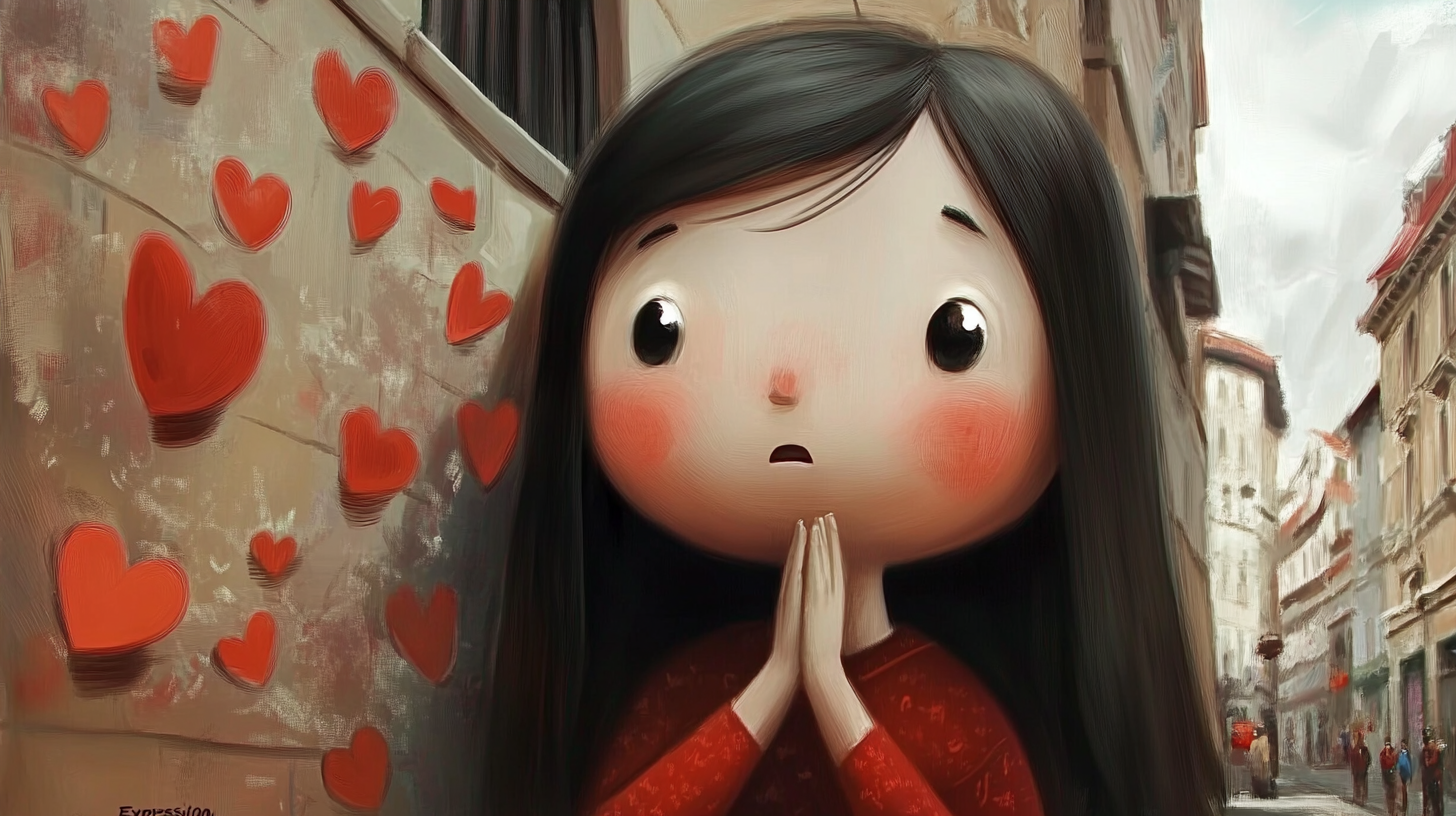“Expression” means the way someone shows their face or how they show their thoughts and feelings.
以下は英単語 “expression” に関するストーリー型学習コンテンツです。まずは大枠の意味を理解して最後の文章で確認しましょう。
主な意味(main meaning)
| 品詞 | 発音記号 | 意味 | 英文例 |
|---|---|---|---|
| 名詞 | /ɪkˈspreʃ.ən/ | 表現、表情、言い回し | Her expression showed that she was surprised. |
語源(etymology)
「expression」はラテン語の exprimere(押し出す)に由来し、「内にあるものを外に出す」というイメージを持ちます。
類義語(synonyms)
| 類義語 | 英文例 |
|---|---|
| phrase | That’s a common phrase in English. |
| gesture | He made a kind gesture to help her. |
| statement | She gave a clear statement about the rules. |
| remark | His remark made everyone laugh. |
反義語(antonyms)
| 反義語 | 英文例 |
|---|---|
| silence | His silence was more powerful than words. |
| suppression | The suppression of feelings can cause stress. |
コロケーション(collocations)
| コロケーション | 英文例 |
|---|---|
| facial expression | Her facial expression showed anger. |
| freedom of expression | Freedom of expression is a basic human right. |
| emotional expression | Children need to learn emotional expression. |
| artistic expression | Art allows for personal and artistic expression. |
2項表現(binomials)
| 2項表現 | 英文例 |
|---|---|
| thoughts and expressions | The diary holds her private thoughts and expressions. |
| feelings and expressions | He struggled with his feelings and expressions. |
英語ストーリー(english story)
Title: The Art Class Surprise
Sakura had always been quiet in school. She didn’t speak much, and her facial expressions rarely changed. Her classmates thought she was shy, but her silence wasn’t because of fear—it was because she found it hard to show her feelings.
One day, their English teacher, Mr. Davis, said, “Today we’ll try something new. I want you to draw your feelings.” Some students looked confused. “This is your chance to use artistic expression,” he added.
Sakura was nervous, but she liked drawing. As she picked up her pencil, she began to draw a girl sitting under a tree with tears falling. The sky was full of dark clouds. Slowly, her hand moved faster. The drawing showed sadness, hope, and even a smile.
When she finished, Mr. Davis looked at her picture and smiled. “This is a powerful expression,” he said. “You’ve used art to say something that words couldn’t.” Other students gathered around and nodded. For the first time, Sakura’s thoughts and expressions were understood by her classmates.
Mr. Davis later said, “Art is a kind of freedom of expression. You should never hide your feelings.” Sakura smiled, a real one this time. She had found a new way to communicate.
和訳
タイトル:美術の授業での驚き
さくらは学校でいつも静かだった。あまり話さず、顔の表情もあまり変わらなかった。クラスメートたちは彼女を恥ずかしがり屋だと思っていたが、彼女が黙っているのは怖いからではなく、気持ちを表すのが難しかったからだ。
ある日、英語の先生のデイビス先生が言った。「今日は新しいことをやってみよう。自分の気持ちを絵にしてほしい。」生徒たちは少し戸惑った。「これは芸術的表現を使うチャンスです」と先生は言った。
さくらは不安だったが、絵を描くのは好きだった。鉛筆を手に取り、木の下に座って涙を流す女の子を描き始めた。空は暗い雲に覆われていた。だんだん手が速く動くようになり、その絵には悲しみ、希望、そして笑顔まで表現されていた。
描き終えると、デイビス先生がその絵を見て微笑んだ。「とても強い表現ですね。言葉では伝えられないことを伝えました。」ほかの生徒たちも集まってきて、うなずいた。初めて、さくらの考えや表現がクラスメートに伝わったのだった。
後に先生は言った。「芸術は表現の自由です。気持ちを隠す必要はありませんよ。」さくらは初めて心から笑った。彼女は新しい伝え方を見つけたのだった。



コメント